Pangaea - Earth History
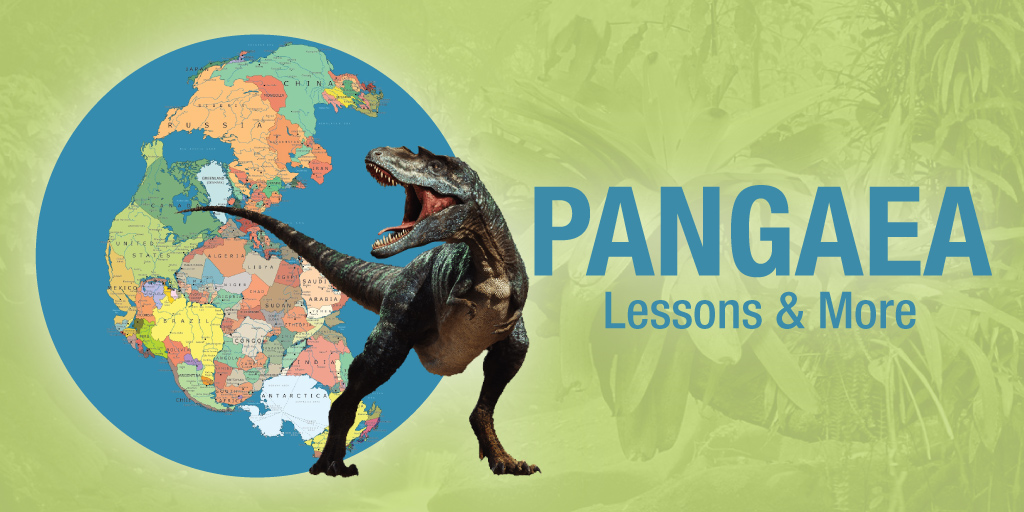
The scientific task is to explain with a strong visual impact the relationships between the ancient supercontinent called Pangaea and the present world continents with their countries and cities

DOWNLOAD FIVE PANGAEA HEMISPHERES POSTER
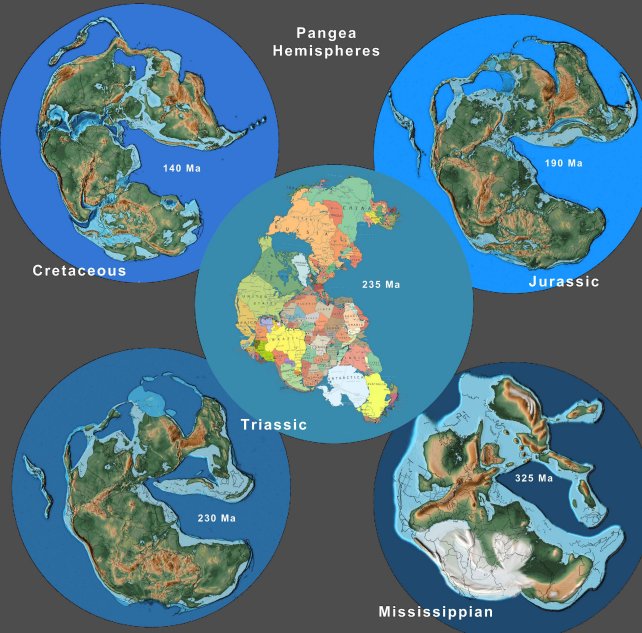
DOWNLOAD MARINE REPTILES WITH CORRESPONDING PANGAEA POSTER

Chicxulub Impact Event, Understanding the K-T Boundary
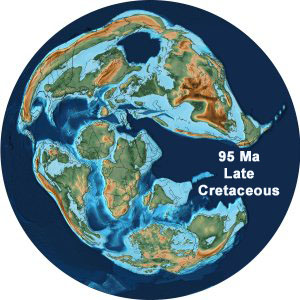
High Water Interior Seaways (90 Ma): New oceans begin to open. During the Cretaceous the South Atlantic Ocean opened. India separated from Madagascar and raced northward on a collision course with Eurasia. Notice that North America was connected to Europe, and that Australia was still joined to Antarctica.
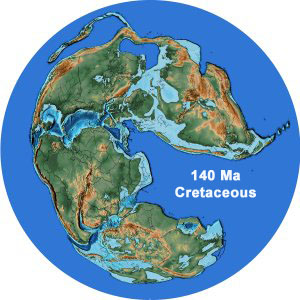
Cretaceous (140 Ma): Pangaea rifts apart. The supercontinent of Pangea began to break apart in the Middle Jurassic. In the Late Jurassic the Central Atlantic Ocean was a narrow ocean separating Africa from eastern North America. Eastern Gondwana had begun to separate form Western Gondwana.
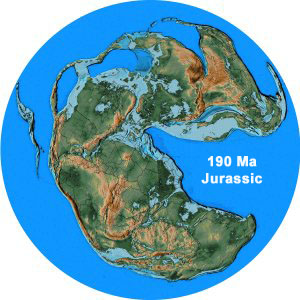
Jurassic (190 Ma): Early Jurassic dinosaurs spread across Pangea. By the Early Jurassic, south-central Asia had assembled. A wide Tethys ocean separated the northern continents from Gondwana. Though Pangea was intact, the first rumblings of continental break up could be heard.
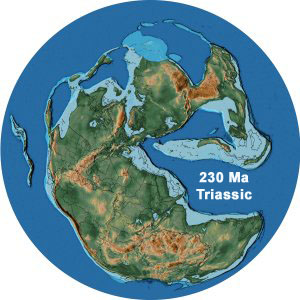
Triassic (230 Ma): At the end of the Triassic Pangea began to rift apart. The supercontinent of Pangea, mostly assembled by the Triassic, allowed land animals to migrate from the South Pole to the North Pole. Life began to rediversify after the great Permo-Triassic extinction and warm-water faunas spread across Tethys.
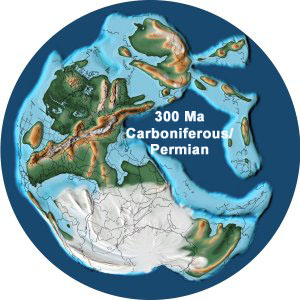
Permian (300 Ma): Late Carboniferous was a time of great coal swamps. By the Late Carboniferous the continents that make up modern North America and Europe had collided with the southern continents of Gondwana to form the western half of Pangea. Ice covered much of the southern hemisphere and vast coal swamps formed along the equator.
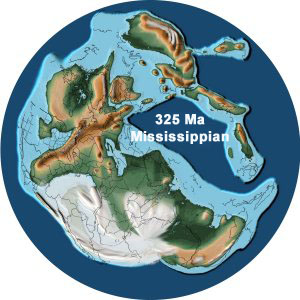
Early Carboniferous (325 Ma): During the Early Carboniferous Pangaea begins to form.
The Paleozoic oceans between Euramerica and Gondwana began to close, forming the Appalachian and Variscan mountains. An ice cap grew at the South Pole as four-legged vertebrates evolved in the coal swamps near the Equator.
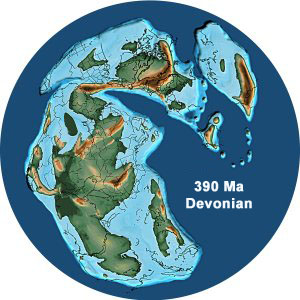
Devonian was the Age of Fish (390 Ma) By the Devonian the early Paleozoic oceans were closing, forming a "pre-Pangea". Terrestial ecossytems had formed in wet marshlands. Freshwater fish were able to migrate from the southern hemisphere continents to North America and Europe. Plants evolved flavonoid compounds to protect from ultraviolet sunrays leading to large increase in plant diversity. Forests grew for the first time in the equatorial regions of Artic Canada. Arachnids developed breathing plates and became fully terrestrial and flightless insects made their appearance.
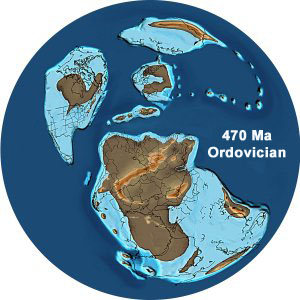
Ordovician (470 Ma) Ancient oceans separate the continents which were mostly south of the equator, more coastlines with shallow seas provided habitat for reefs and diversity of invertebrates, marine life tripled. Trilobites were dominant but began their decline. Increased atmospheric oxygen and increased oceanic nutrient availability created a large increase in phytoplankton diversity and the abundance of plankton-feeding groups. Brachiopods and cephalopod squids and some fishes began to diversify, sponges began building reefs. Atmospheric carbon levels dropped to half what they had been previously allowing moderate temperatures.
The attached article indicates that mass extinction ending this time period was associated with anoxia and climatic cooling.
What Conditions Accompanied the Late Ordovician Mass Extinction?
Pangaea Classroom Activity
Exploring the Ancient World of PangaeaExploring the Ancient World of Pangaea Answer Key
Wegener Standards for Middle School
Wegener Standards for High School
Wegener's Puzzling Continents
Curriculum Standards
Exploring the Ancient World of PangaeaActivity Code
HINT: If you are viewing this page from one our Real World Globe activities please make sure the QR code you scanned matches the QR code on this page.
Download free QR Reader/Scanner
